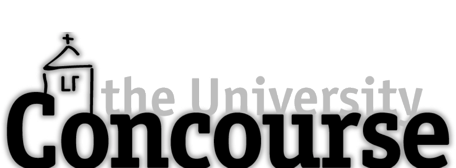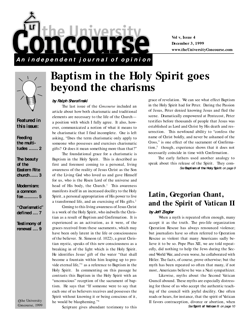Learning about the Eastern Rites
by Michael Wrasman
Pope John Paul II knows a secret—one which few Roman Catholics share. Growing up in Eastern Europe, he has perhaps had more opportunities to become initiated in this mystery than we Westerners. Now he is urging us to discover something long forgotten in the Christian West: the beauty of the Eastern Catholic Churches.
In his Apostolic Letter, “The Light of the East,” John Paul II states,
I believe that one important way to grow in mutual understanding and unity consists precisely in improving knowledge of one another. The children of the Catholic Church already know the ways indicated by the Holy See for achieving this: To know the liturgy of the Eastern Churches; to deepen their knowledge of the spiritual traditions of the Fathers and Doctors of the Christian East, to follow the example of the Eastern Churches for the inculturation of the Gospel message; to combat tensions between Latins and Orientals and to encourage dialogue between Catholics and the Orthodox; to train in specialized institutions theologians, liturgists, historians and canonists for the Christian East, who in turn can spread knowledge of the Eastern Churches; to offer appropriate teaching on these subjects in seminaries and theological faculties, especially to future priests (OL, 24).
At Franciscan University of Steubenville, we have a responsibility to familiarize ourselves with the Eastern Catholic Churches that are in union with the Holy See. Understandably, this responsibility has been neglected in the quest to build a solid academic institution. However, now the University is maturing and expanding, we may raise the suggestion: Why not begin the process of exposing our students to the Catholic East?
As things stand now, the overwhelming majority of the students on campus know little or nothing concerning their Eastern Catholic brothers and sisters in Christ. If you ask most students, “Who are the Eastern Catholics?” you would receive a response such as, “I don’t know,” or “They are Orthodox, aren’t they?” This situation saddens me.
To be truly Catholic—i.e., universal—Catholics should know about all the rites of the Catholic Church, not just the Latin rite. Ignorance of the Eastern Catholic churches is to be ignorant of the entire Catholic Church. For, as the Second Vatican Council states clearly, the Eastern rites come together with the Latin Rite to form the holy Catholic Church:
The holy Catholic Church, which is the Mystical Body of Christ, is made up of the faithful who are organically united in the Holy Spirit by the same faith, the same sacraments and the same government. They combine into different groups, which are held together by their hierarchy, and so form particular churches or rites. Between these churches, there is such a wonderful communion that this variety, so far from diminishing the Church’s unity, rather serves to emphasize it (Decree on the Catholic Eastern Churches, 2).
The Eastern Catholic Divine Liturgy is a beautiful liturgy to attend.1 It is other-worldly and a spiritually exotic experience, especially rich in veneration of Mary, Mother of God. The Divine Liturgy of Saint John Chrysostom, a prayer sung by the priest is as follows:
Only begotten Son and Word of God, immortal as you are, You condescended for our salvation to take flesh from the Holy Mother of God and ever-virgin Mary, and without undergoing change, You became Man; You were crucified, O Christ God, and crushed death by your death; You are one of the Holy Trinity, equal in glory with the Father and the Holy Spirit: save us!
In between the first and second antiphons, a prayer is sung by the priest to Our Lady:
Let us remember our all-holy, spotless, most highly blessed and glorious Lady, the Mother of God and ever-virgin Mary with all the saints, and commend ourselves and one another and our whole life to Christ our God.”
At one of the commemoration prayers, the priest (in the Pittsburgh Metropolia of the Byzantine Ruthenian Catholic Church) sings:
First, Lord, remember His Holiness, John Paul II, the Pope of Rome, His Beatitude, Metropolitan Judson. Preserve them as a blessing over your holy Churches in peace, safety, honor, health, long life, rightly dispensing the word of your truth.
This is in contrast with the Novus Ordo Mass of the Latin rite, which seems almost embarrassed to mention Mary and the Pope.
Most of the visitors to an Eastern Catholic Divine Liturgy, from what I have witnessed, are impressed by the mystery and majesty of the liturgy. Some students have even remarked: “It is like visiting heaven.”
It is sometimes asked, “Why don’t the Eastern Catholics just abandon their peculiar way of doing things and become Latin Rite?” To answer this question, we need look no further than the Second Vatican Council’s Decree on the Catholic Eastern Churches:
The Catholic Church values highly the institutions of the Eastern Churches, their liturgical rites, ecclesiastical traditions and their ordering of Christian life. For in these churches, which are distinguished by their venerable antiquity, there is clearly evident the tradition which has come from the apostles through the Fathers and which is part of the divinely revealed, undivided heritage of the Universal Church. This holy, ecumenical synod, therefore, has a special care for the Eastern Churches, which are living witnesses to this tradition, and wishes them to flourish and to fulfill with new apostolic strength the task entrusted to them (OE, 1).
This document of the Second Vatican Council is, in my opinion, a Magna Carta for the Eastern Catholic Churches. Prior to Vatican II, most bishops and priests of the Latin Rite had little or no familiarity with the Eastern Catholic Church and, if they did, Eastern Catholics were seen as second-class Catholics. Today many more bishops and priests have begun to recognize the riches of the Eastern Catholic Churches. However, this awareness has not yet filtered down to the diocesan level or to the parish level.
Since my teen years (I am now thirty-nine) I have never seen an Eastern Catholic priest give a homily at a Roman Catholic parish, although I have seen Protestant ministers deliver homilies during the Week of Christian Unity. In my almost two years of studying in the Master of Arts in Theology and Christian Ministry program here, even in the “Catholicism and Eastern Orthodoxy” graduate course I took, I have never had the opportunity to hear an Eastern Catholic priest as a guest lecturer—though more than one MA theology professor gives students an opportunity to attend a Divine Liturgy in an area Eastern Catholic church as part of his course.
As far as on-campus activities are concerned, would it not be possible to have an Eastern Catholic priest preach at the “Preach Out?” We have Protestant ministers preaching during the “Preach Out” and that is advancing the cause of ecumenism. However, not to have an Eastern Catholic priest preach at the “Preach Out” is neglecting our own Eastern Catholic brothers and sisters, I believe.
On November 16, a Byzantine Catholic Divine Liturgy was concelebrated by Fr. Harold Imamshah, a graduate student at FUS and Fr. Andrew Chura, pastor of Saint Joseph Ruthenian Catholic Church in Toronto, OH and Saint John the Baptist Ruthenian Catholic Church in Mingo Junction. Christ the King Chapel was filled to capacity. For many students, staff and faculty, it was the first taste of Eastern Catholicism. It was a good beginning, for which I am very grateful.
Michael Wrasman is a student in the MA Theology program.
- For those interested in encountering Eastern Catholicism, the best place to start is by attending a Divine Liturgy. There are several Eastern Catholic Churches in the area; three within a seven-mile radius of Steubenville (Saint Mary of the Dormition in Weirton, West Virginia; Saint Joseph in Toronto, Ohio, and Saint John the Baptist in Mingo Junction.) In addition to these Byzantine Ruthenian Catholic churches, there is also a Ukrainian Catholic Church and a Maronite Catholic Church in Wheeling. Roman Catholics are welcome to receive the Eucharist at an Eastern Catholic Divine Liturgy and the liturgy fulfills their Sunday obligation. ↑


